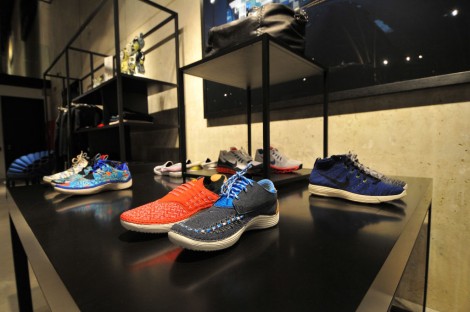Customer experience refers to all the relationships between a customer and a company. These steps are numerous and range from the birth of the need to the end of the association through the purchase and use of the product or service. Customer experience has become very complex in the digital age. It is said to be “multi-channel.” To better understand the process, it is interesting to visualize it, which implies knowing the different steps.
This article details the main steps of the customer experience that you will only have to specify to make them correspond to your case.
Contact us for your customer experience research
Summary
- Why research the customer experience?
- How can you benefit from customer experience analysis in your business?
- Link between customer experience and marketing mix
- The main stages of the customer experience
Why research the customer experience?
The customer experience research is primarily used to objectify the channels that are important for the company:
- Communication channels
- Acquisition channels
- Retention channels
Understanding and objectifying these different channels allows you to act concretely to improve the company’s actions. This approach is instrumental in B2C, where the customer experience is more complex, less rational than in B2B, and more individualized than ever.
Many models exist. We do not claim that ours is better, but it adapts very well to many situations. Its interest lies in its adaptability to many contexts.
How to use customer experience analysis in your company?
Beyond the intellectual exercise, recomposing the customer experience must imperatively lead to concrete operational actions.
In our projects, the analysis of the customer experience leads to 2 concrete lessons:
- an assessment of the retention rate between each stage
- a measurement of the satisfaction rate at different crucial stages
These 2 elements are the most powerful levers available to propel your company’s growth. By improving the retention rate, you increase your customer base. By improving satisfaction, you increase loyalty.
The link between customer experience and marketing mix
Reconstructing the customer experience allows us to identify the critical channels, the new contact points between a brand and its customers. The marketing strategy can then be reviewed according to this customer experience, taking into account the marketing mix elements.
These elements will then be “set to music” according to the different stages of the customer experience.
For example, you can adapt the pricing strategy (“product” marketing mix) according to the “touchpoint” and the customer’s position in the customer experience:
- you could propose a new customer a more attractive price than an existing customer
- customers subscribing to a service via a less expensive channel could be given preference
The stages of the customer experience
While there are many steps along the way, it is useful to group them into broad categories:
- Awareness: the passive knowledge of the company’s existence
- Creation of a need: the (future) customer realizes that they have a need to fill.
- Consideration: the knowledge of the company’s offer and the need converge in the customer’s brain.
- Purchase: this is the act of buying.
- Use of the product
- Service
- Assessment: satisfaction, loyalty, word-of-mouth
- Disposal / Re-purchase
Awareness
Many companies start their customer experience at the moment of purchase. This is a mistake. A customer experience should start much earlier, from the moment the (future) customer becomes aware of your brand. This event is cardinal because there can be no meeting of the need and your brand without it.
Creation of a need
Without needs, there is no purchase. And without a purchase, there is no business. From the birth of the need in the customer’s brain, all business opportunities arise, whether in B2C or B2B. So it’s better to be known to have a chance to be chosen.

The birth of the need is not necessarily later than the awareness phase. The two can be concomitant. Not all needs are anticipated. Sometimes, the discovery of a company’s offer is the element that triggers the desire to buy. This is known as the buying impulse. The retail sector is addicted to this because impulse purchases are significant contributors to profits.
Positioning a product strategically on the consumer’s path increases its chances of being seen and therefore of being bought.
Consideration
Under the term, “consideration” lies a very complex reality, the one that leads a customer to include your offer in his choice. Knowing that the offer exists is a prerequisite, which is why we start the customer experience with awareness.
Purchase
The dynamics of the purchasing act are very complex. It is specific to each product/service and is likely to vary widely from one individual to another. The act of buying is not necessarily rational as economists would like to believe. Far from weighing the pros and cons of each purchase, human beings are often subject to the unconscious and more irrational decision-making processes.
When establishing the customer experience, it is helpful to keep this in mind to identify the factors that could play a role in the decision. We recommend that you read our guide to customer experience, where the different dimensions that can come into play are presented.
Use of the product
Of course, the use of the product or service is the crucial moment of any customer experience. Primarily during the first use, the customer’s opinion will be formed. This opinion can evolve with the product or service and may alter the first impression.
Service
The service component is often mentioned in the customer experience. However, it is not always part of it. You will have to decide on whether or not to integrate it on a case-by-case basis.
If customers use this service component well, it becomes an element of attention. Indeed, customer service is part of the customer experience and is an integral component of customer satisfaction (see this article on the moments in the customer experience where satisfaction can be measured).
Assessment of the customer satisfaction
After the act of consumption in the broad sense, the moment of assessment comes. Whether conscious or unconscious, this assessment will shape the customer’s sense of satisfaction. Although it is a complex process, satisfaction is measured in the customer’s brain by comparing his expectations with what he has actually “received.” This is a relatively broad concept that covers both the product or service itself and extends to peripheral elements such as customer service.
Customer satisfaction is the trigger for behaviors such as loyalty or word-of-mouth. Therefore, it is essential to measure it to anticipate these behaviors (for example, via the Net Promoter Score). In some customer experience models, loyalty is a separate element. We prefer not to consider loyalty a separate step because it is intimately linked to satisfaction.
Disposal/Re-purchase
In some cases, the purchased product must be disposed of after use or once it is out of service. This particular step can mark the beginning of a new cycle. For example, think of electronic equipment that, once out of use, can be returned to the store when purchasing a new device.
Posted in Marketing, Strategy.








